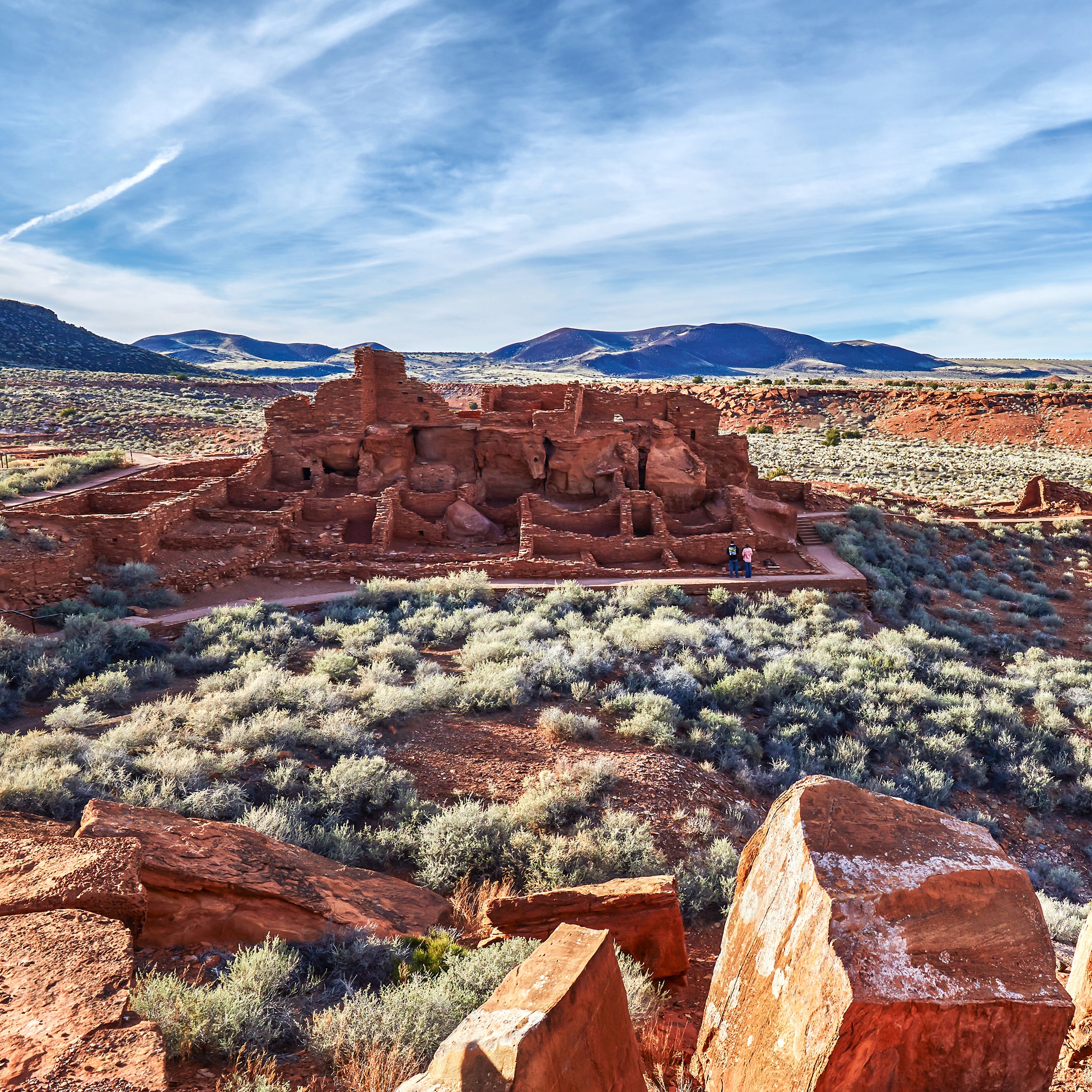Flagstaff has long been a tourist hotspot, thanks to its location on Route 66 and its proximity to the Grand Canyon. These days it’s only become more of a magnet because of a growing number of incredible restaurants and microbreweries, its extensive network of mountain biking and hiking trails, and well-respected Northern Arizona University. Here’s what you should plan to see and do when you stop by.
Explore Wupatki National Monument
Set in the high, windswept desert 44 miles northeast of Flagstaff, contains dozens of millennium-old ruins. Built by Ancestral Puebloans between A.D. 500 and 1250 and subsequently abandoned, the complex features three large buildings—one of which contains an estimated 100 separate rooms and a ball court similar to the ones found in Central America.
Hike Humphreys Peak
From the summit of 12,637-foot —Arizona’s highest point, sitting in the San Francisco Peaks, just outside of town—look north to catch a slice of the or look west to check out the . While the hike from Arizona Snowbowl ski area is steep and continuous, it’s only 4.8 miles to the summit.
Hike the West Fork of Oak Creek
Locals’ secret no more, the six-mile trek up the is a watery oasis for hot days. Just 20 miles south of Flagstaff, the sycamore-lined trail through the towering red-rock canyon crosses the creek a dozen times, traversing swimming holes beneath scalloped, overhanging walls.
Check Out the Grand Canyon
The famed 6,000-foot-deep span of majestic cliffs and mesas, home to the mighty Colorado River, is 90 minutes north of Flagstaff. From the , take in some of the best views on the planet at Grandview, Mather Point, and the Kolb Studio. If you’re feeling more adventurous, descend a few miles into the canyon via the Hermit Trail, which is generally less crowded than the Bright Angel Trail.
Stargaze at Lowell Observatory
Though the ’s star achievement—the discovery of Pluto in 1930—has been dimmed somewhat by the dwarf planet’s demotion from full-fledged planet, the observatory itself remains a marvel. Established in 1894, it’s open daily for solar and nighttime celestial viewing, and remains the driver behind Flagstaff’s efforts to remain a designated Dark Sky City.

